


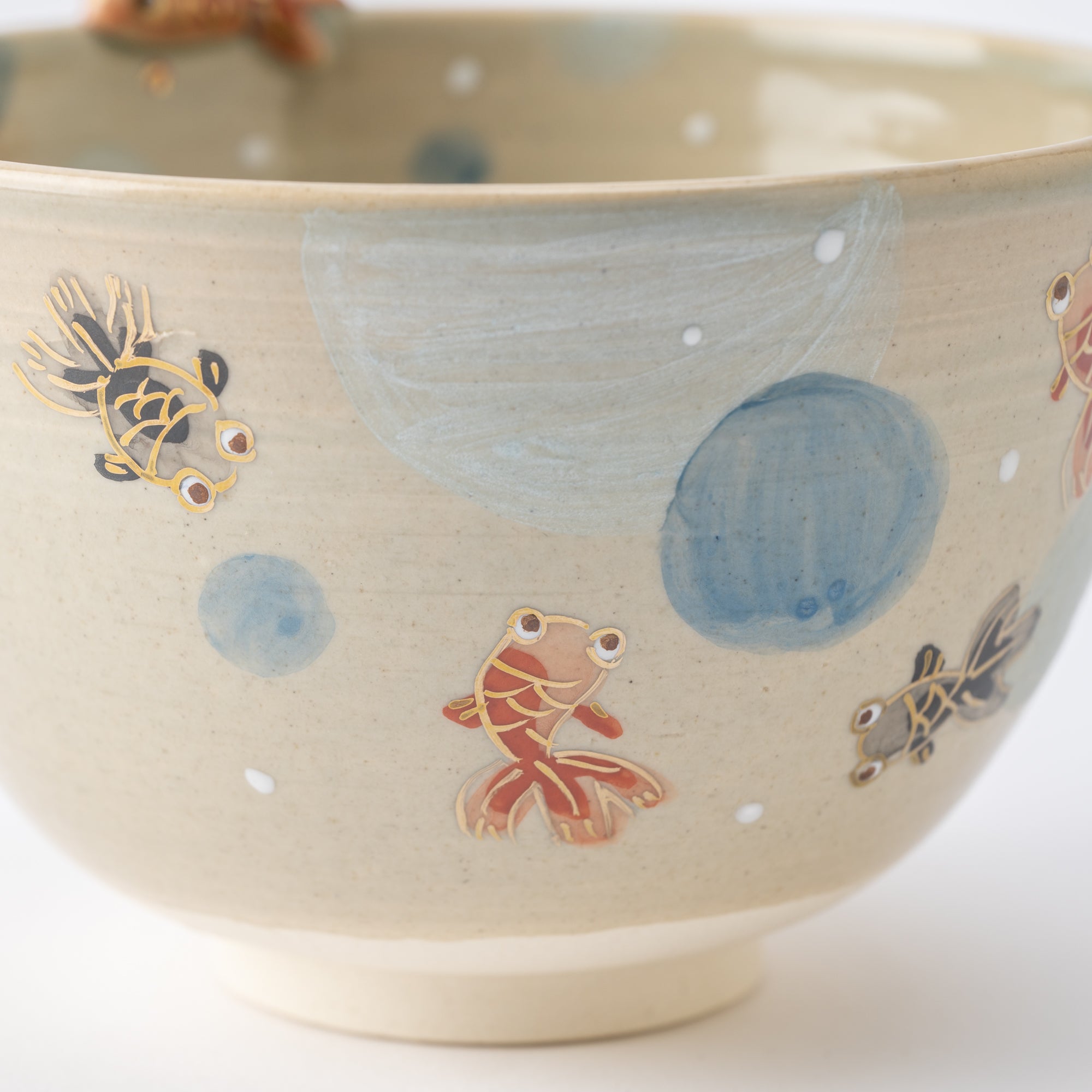
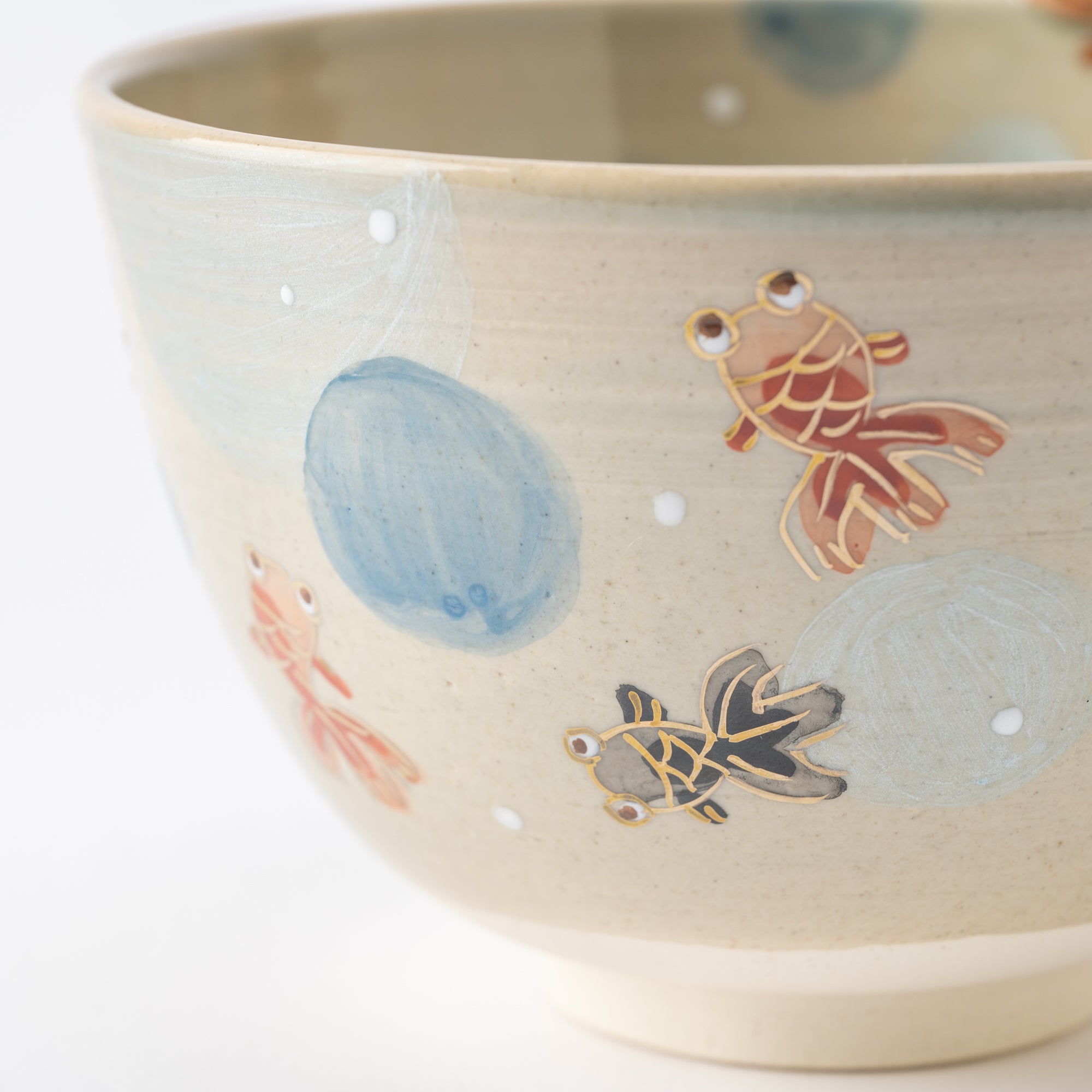

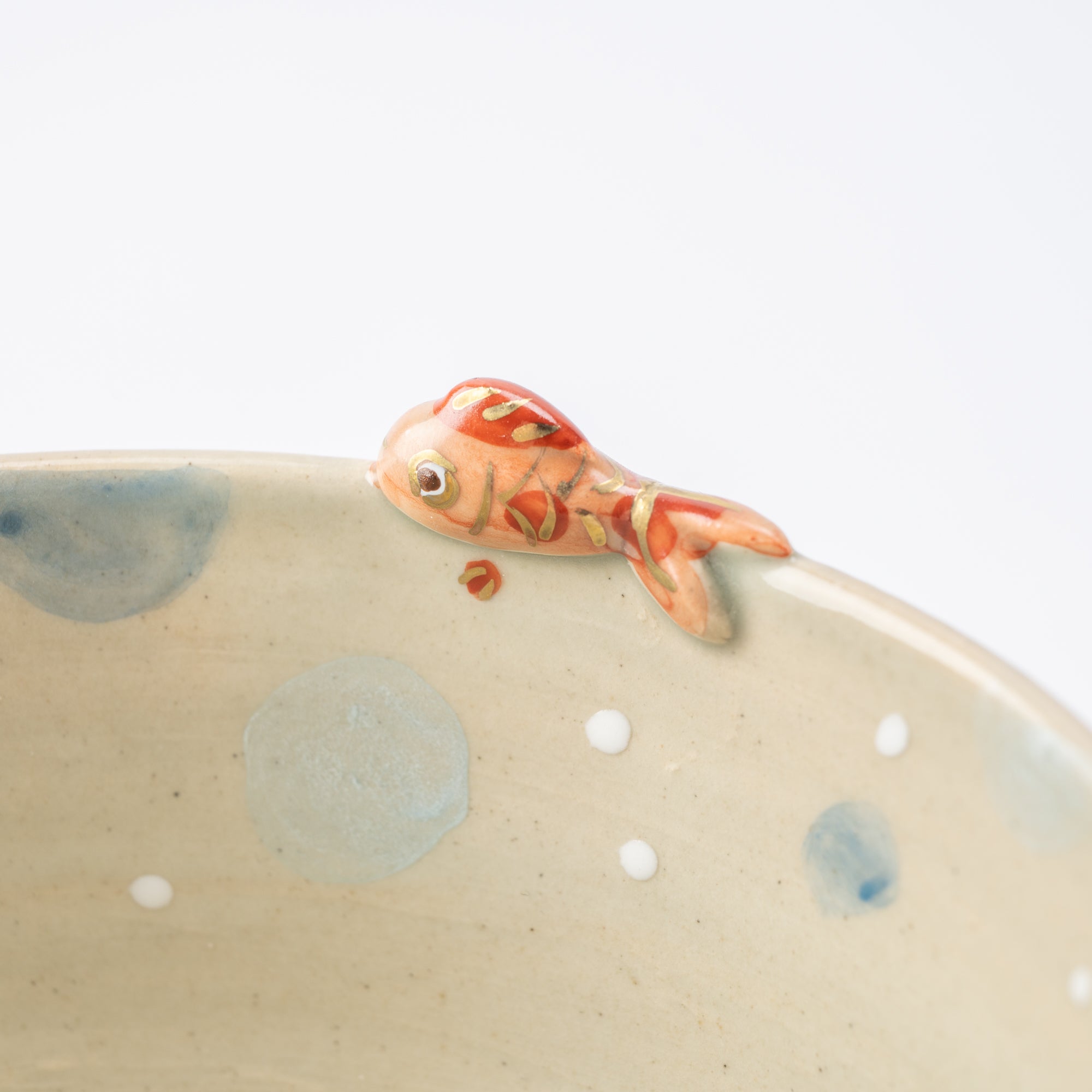
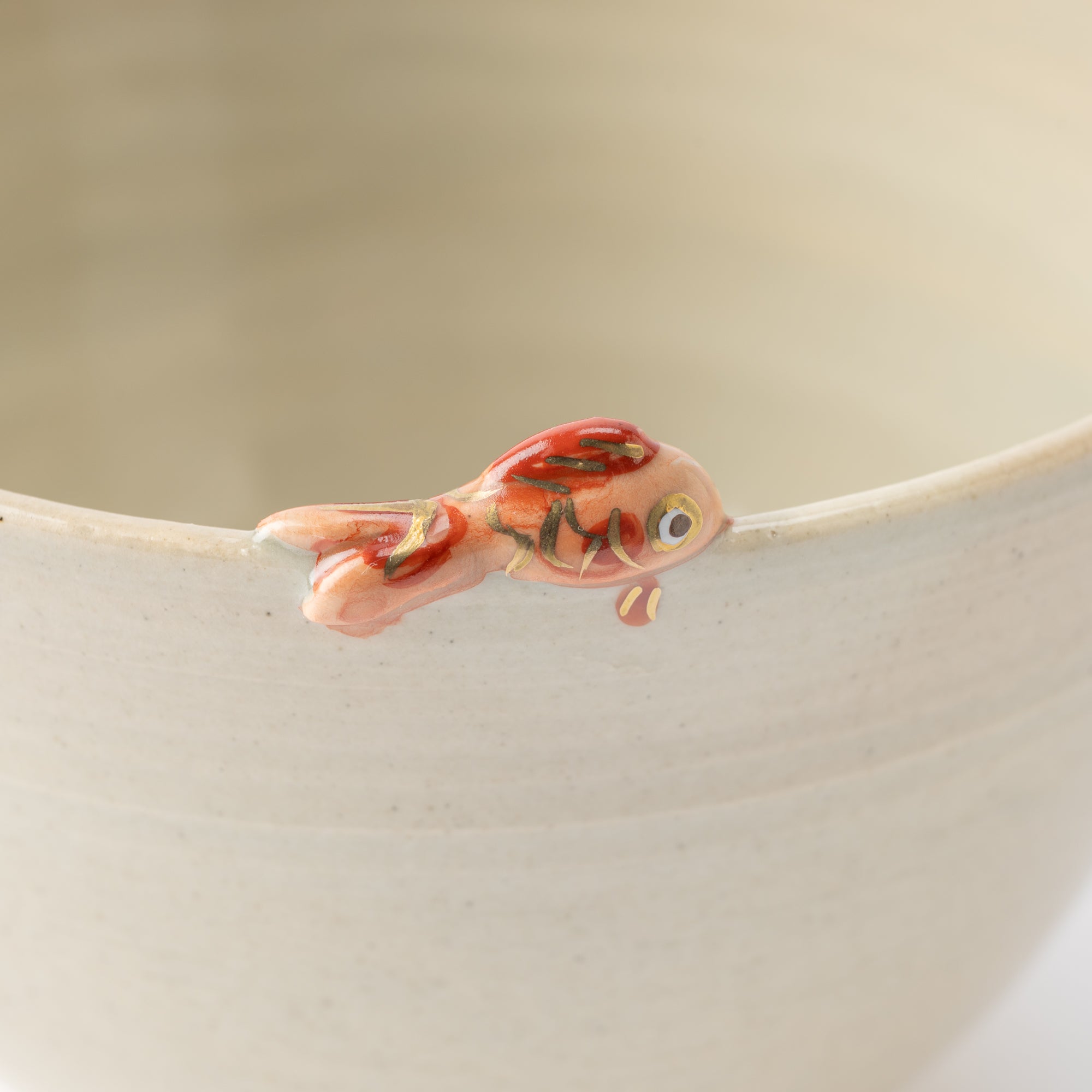
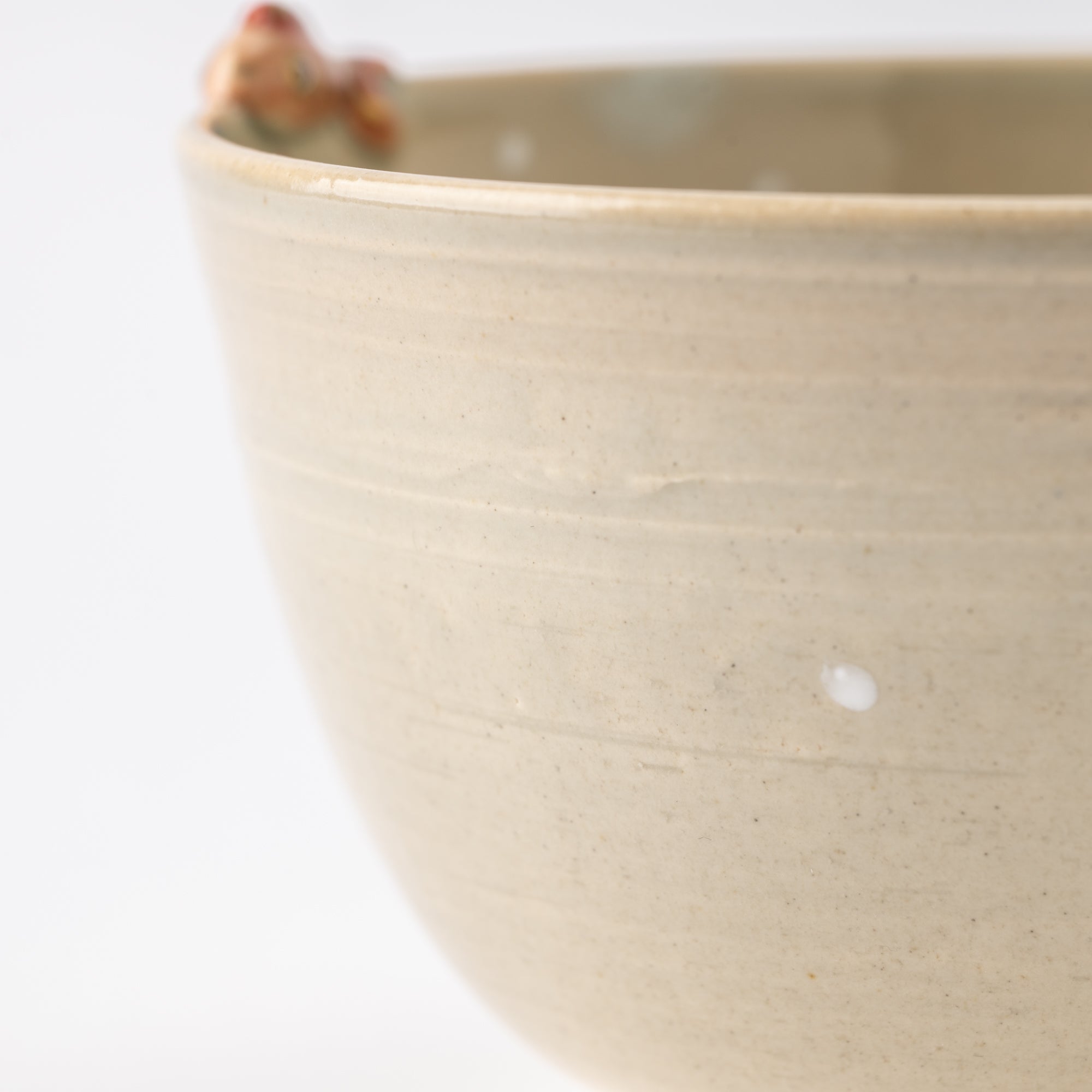


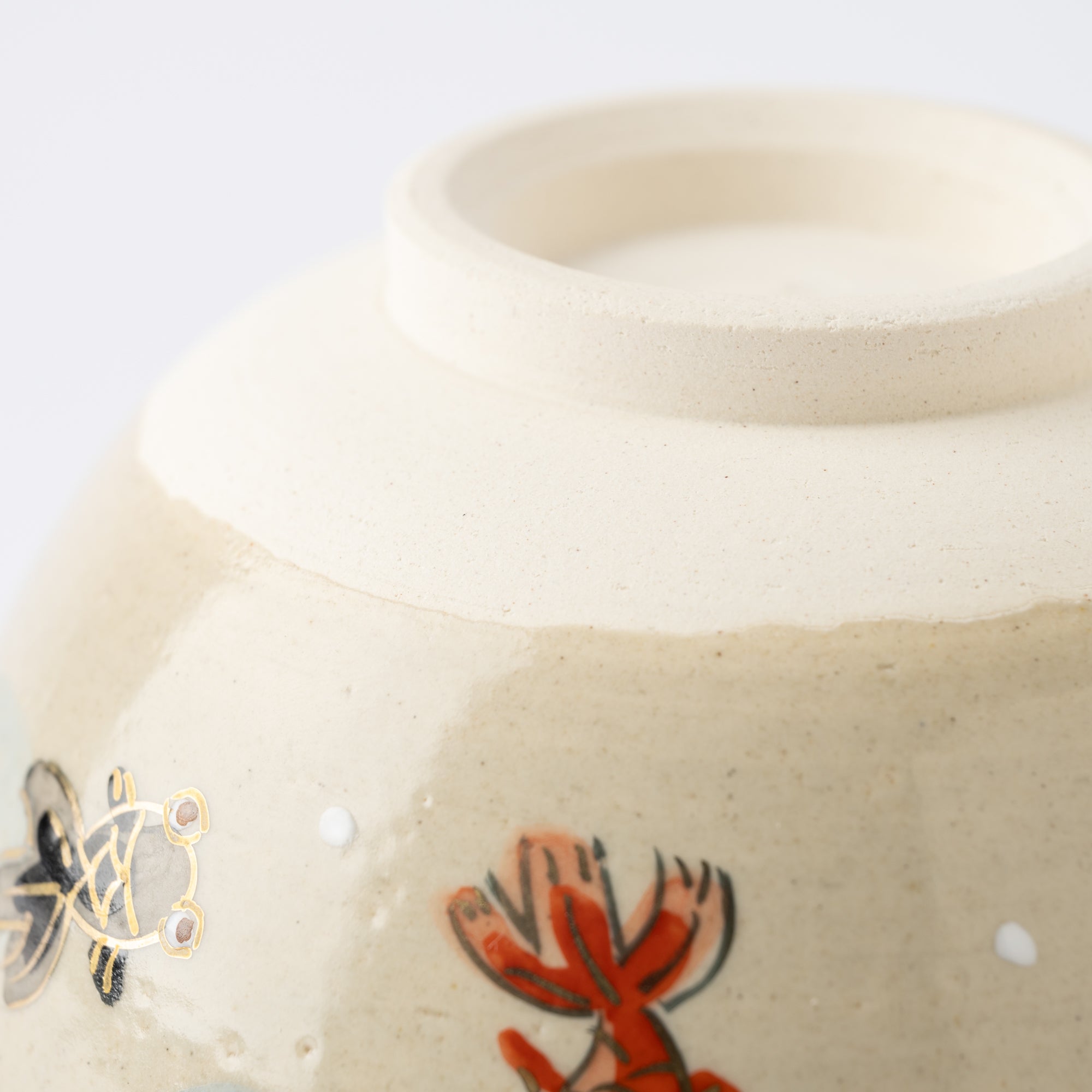

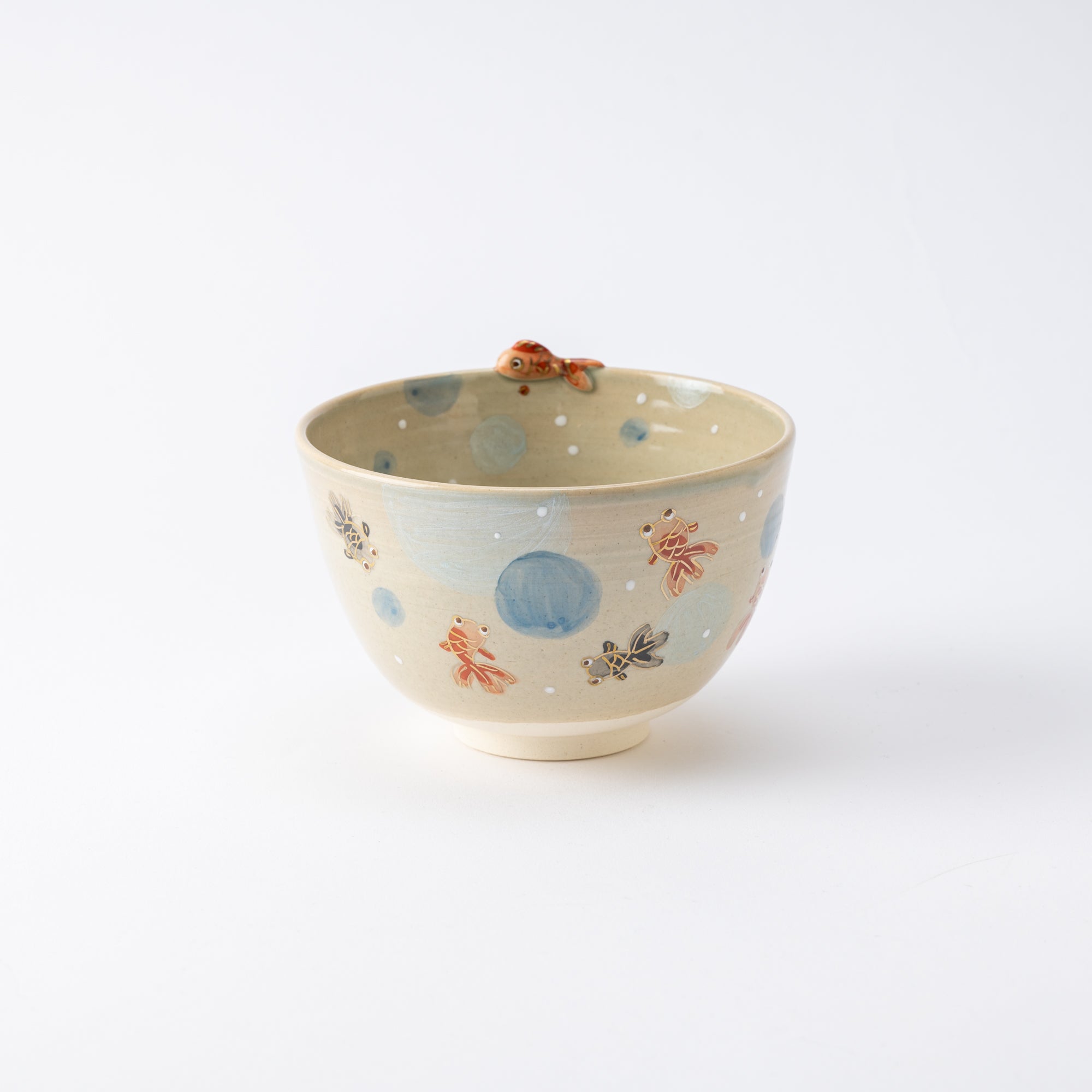
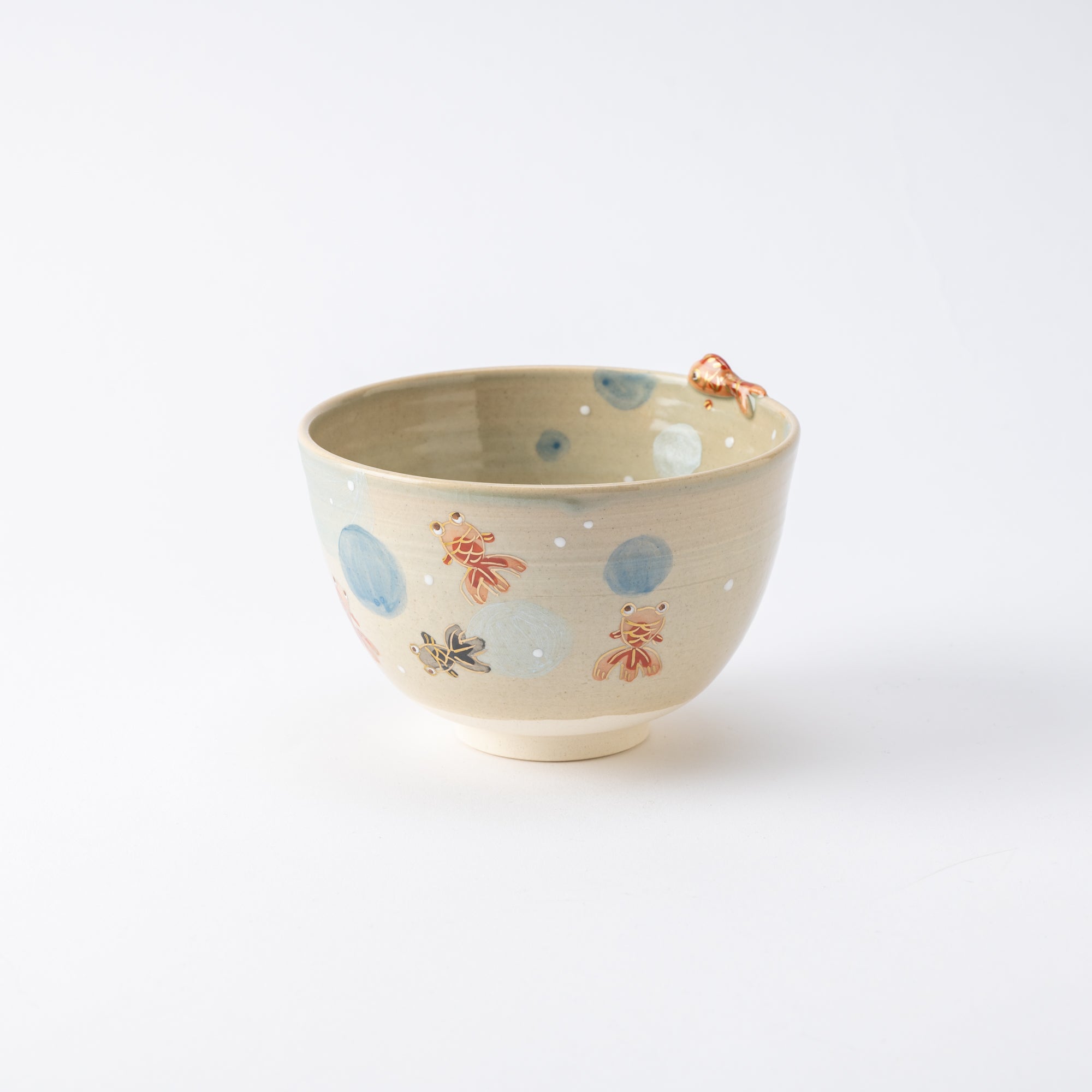
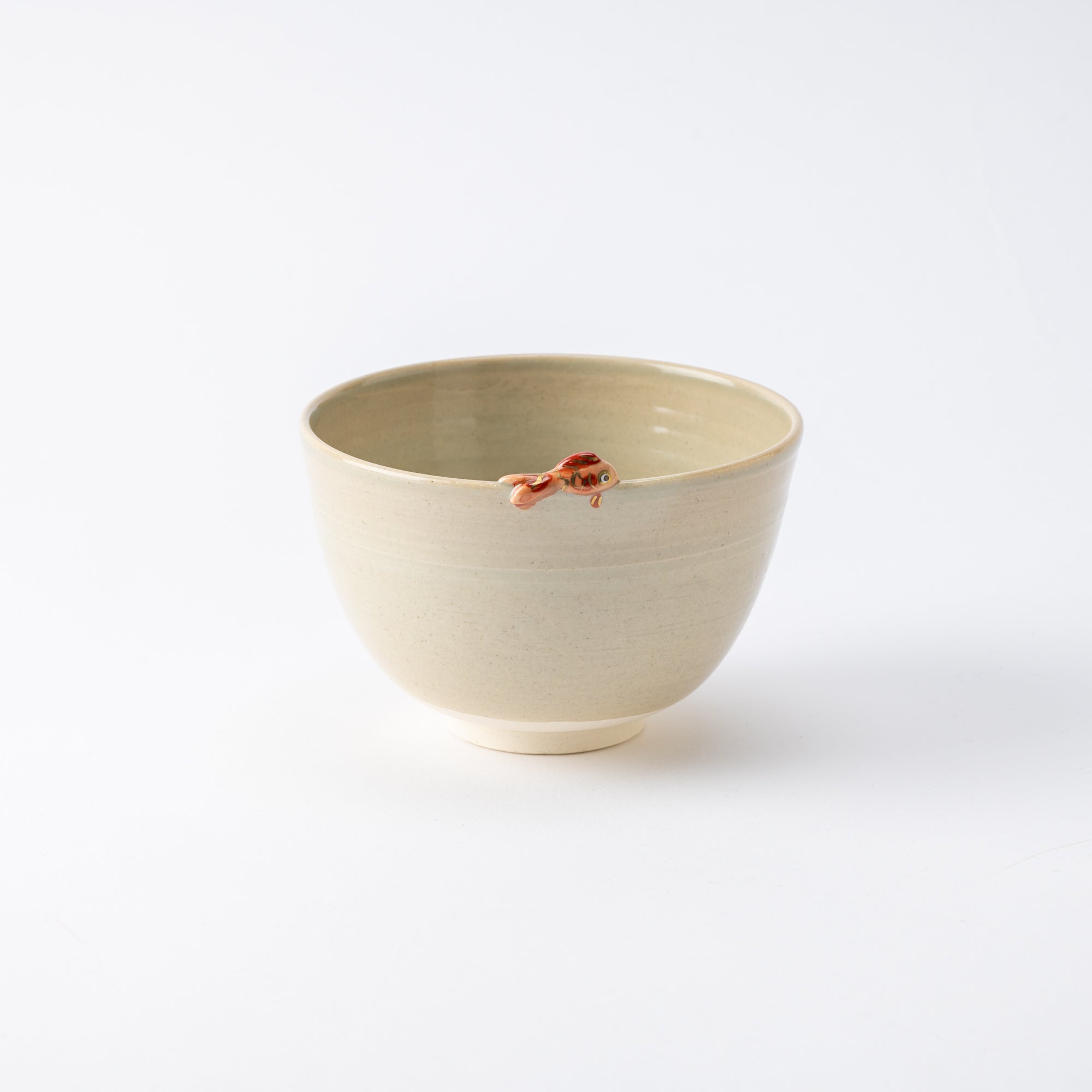
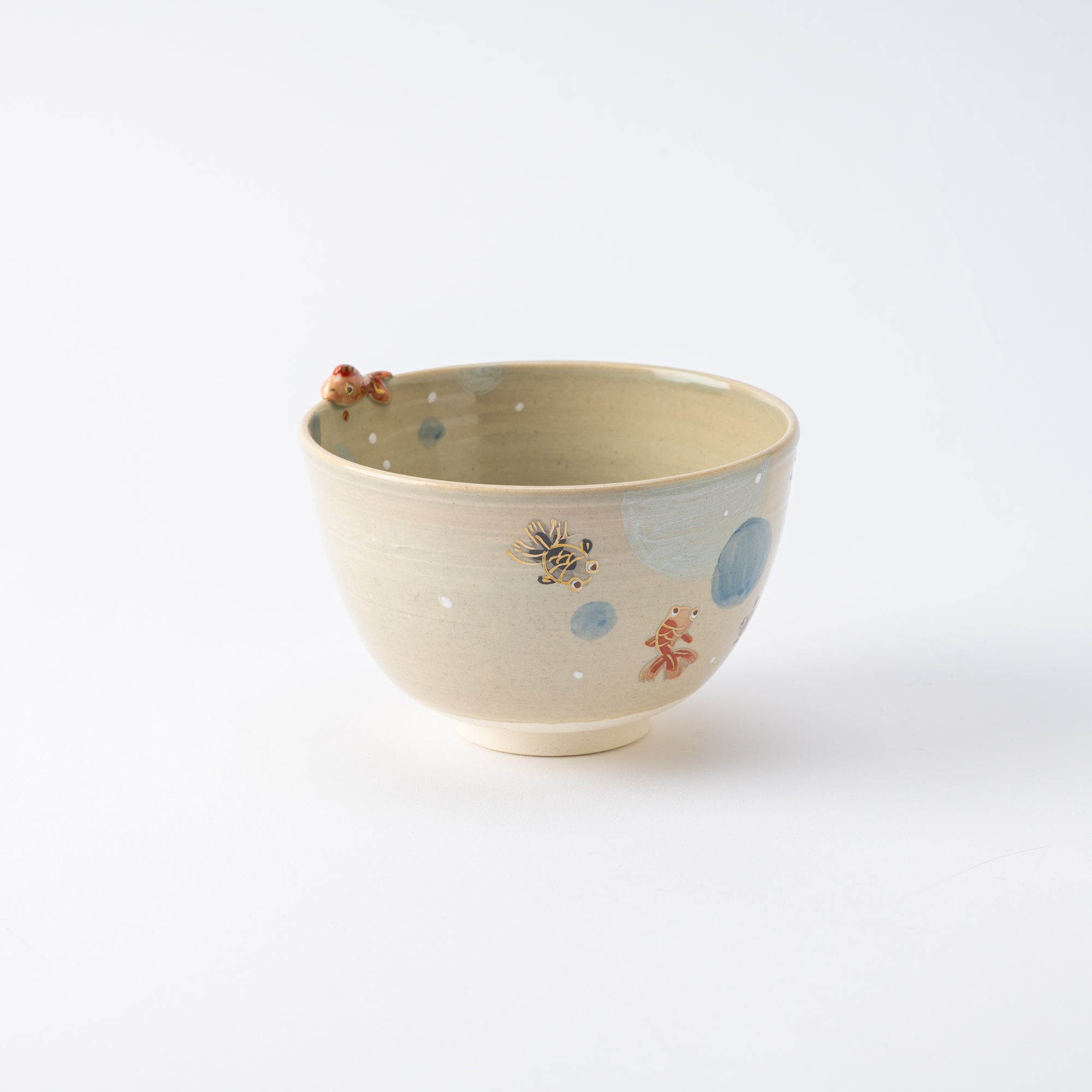

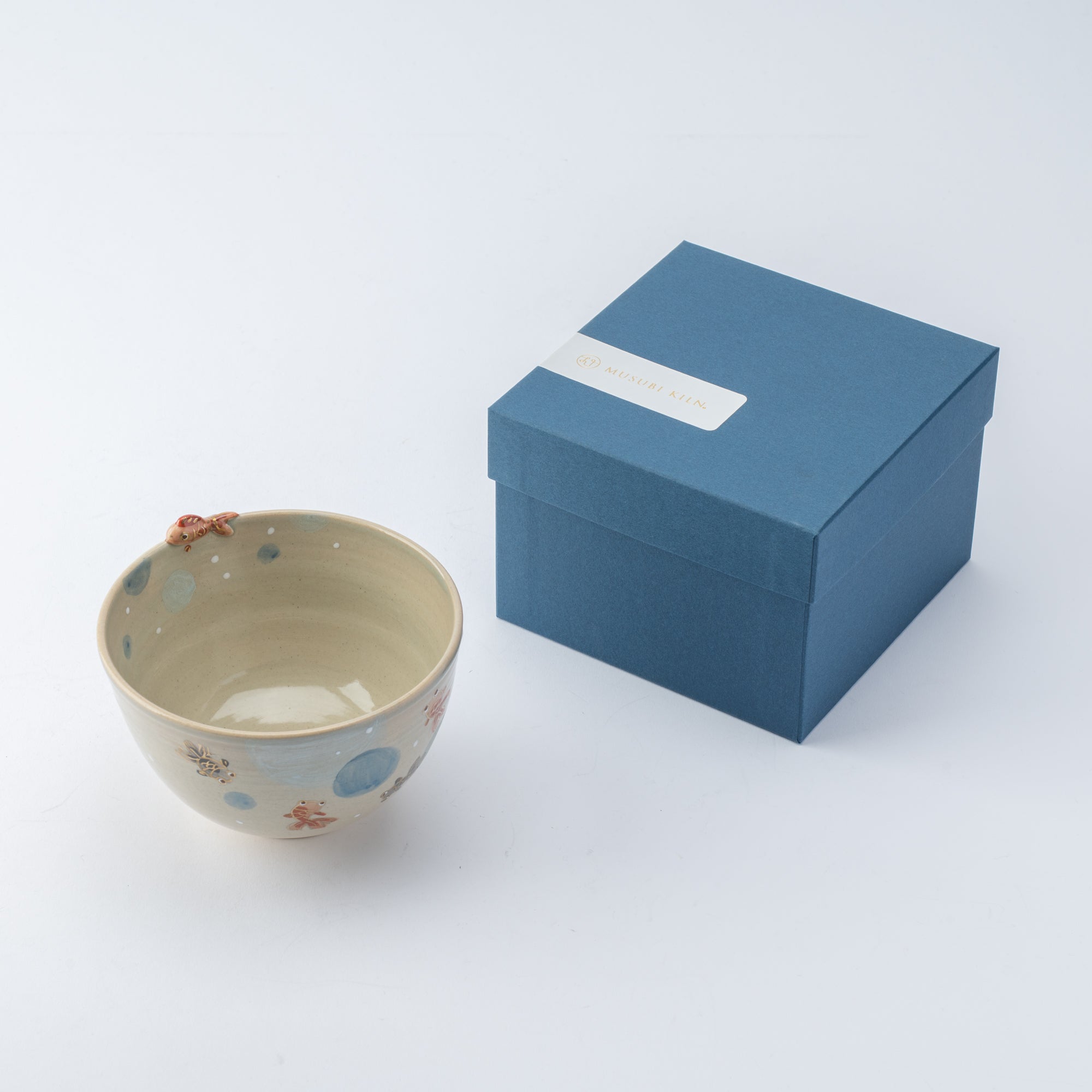
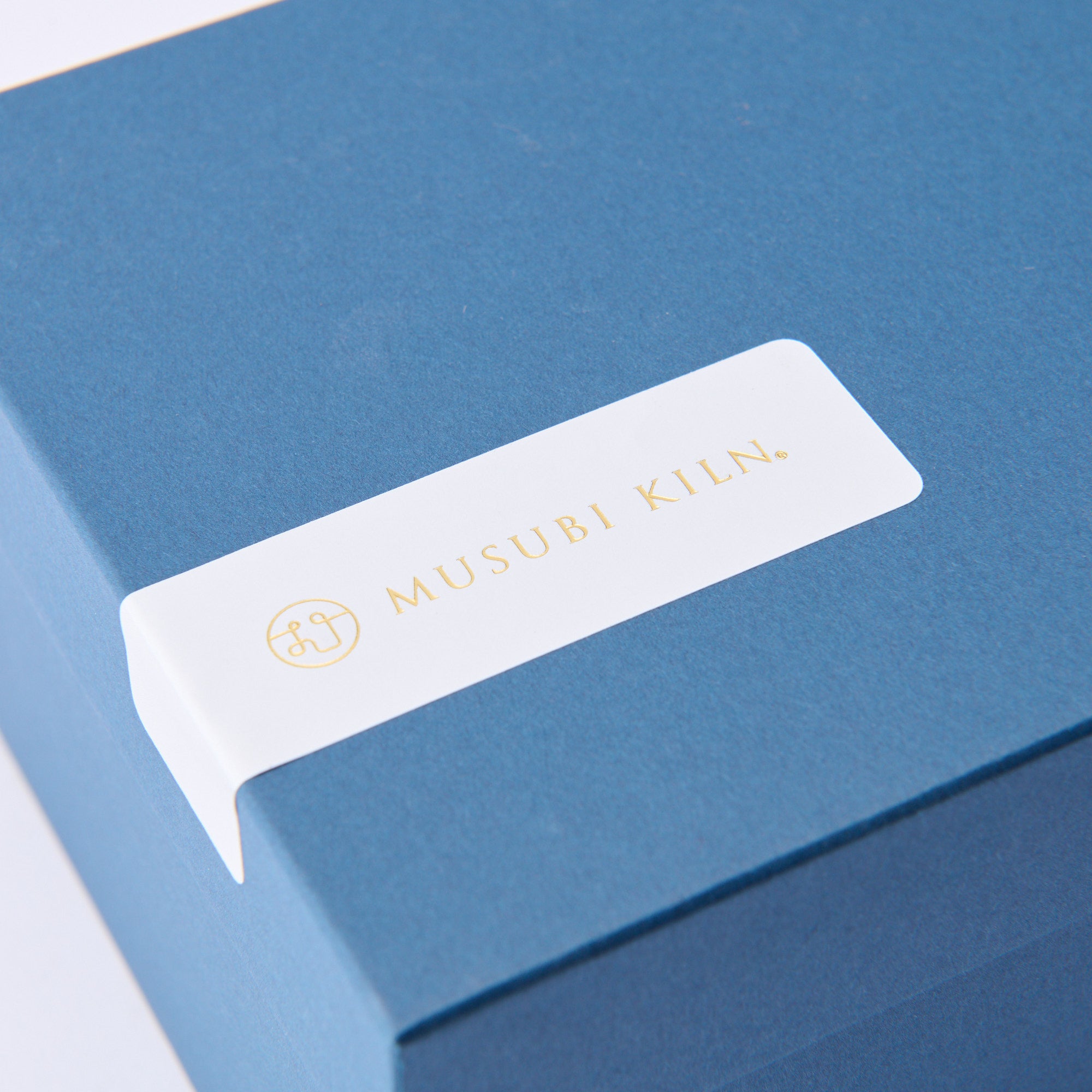
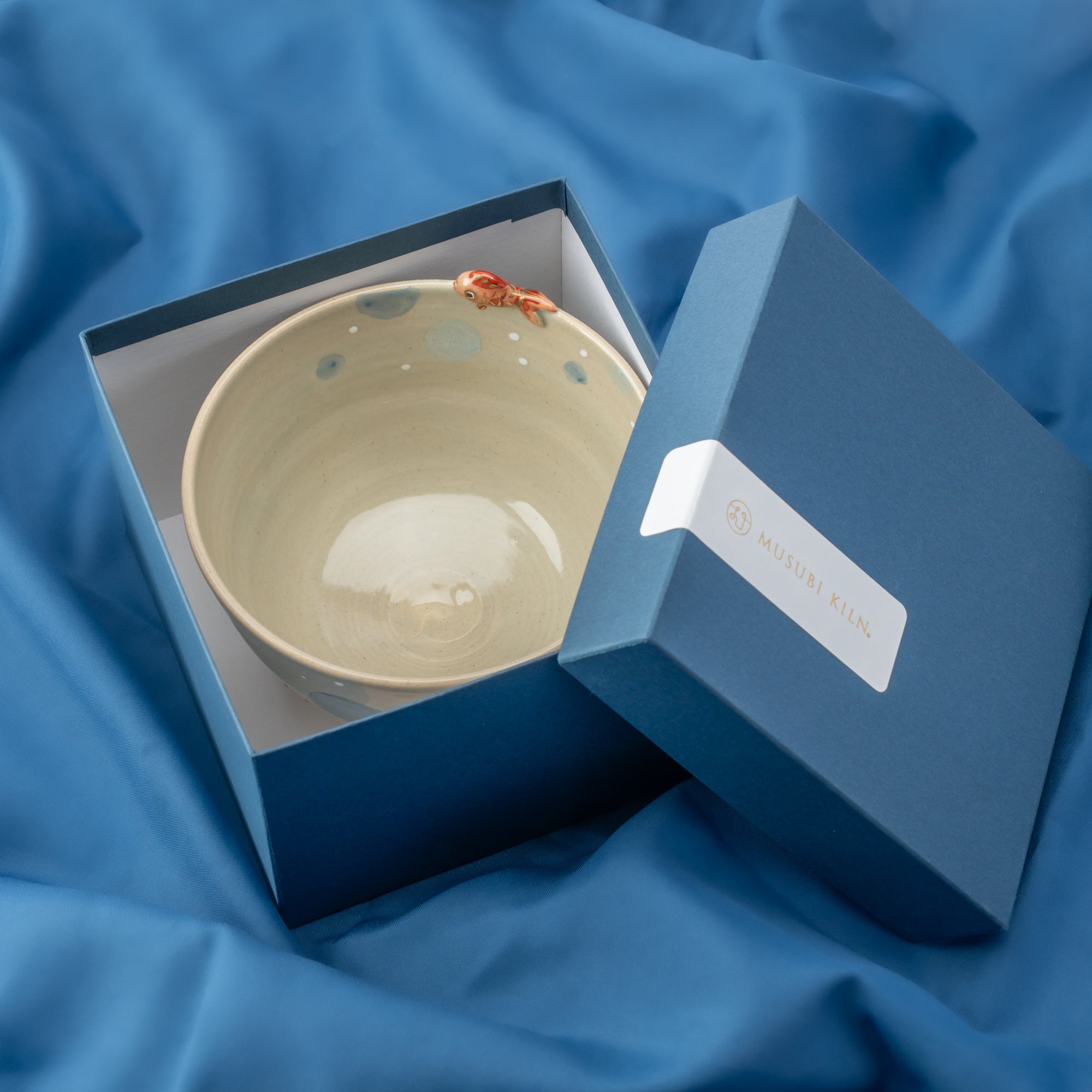
Sprudelnde Goldfisch-Matcha-Schale
Estimated Shipping Widget will be displayed here!
Der bezaubernde Goldfisch, der am Rand entlangschwimmt, verstärkt den Charme dieser Teeschale zusätzlich. Seine Anwesenheit macht Ihr Matcha-Erlebnis noch angenehmer. Sowohl innen als auch außen schwimmen weitere großäugige Goldfische zwischen großen blauen Blasen. Der erdige Beigeton der Teeschale harmoniert wunderbar mit den niedlichen schwarz-roten Goldfischen, die mit goldenen Akzenten umrandet sind.
Der Goldfisch gehört zu den vielen glücksverheißenden Tieren, die die Japaner lieben. Er ist ein beliebtes Sommermotiv und ruft ein Gefühl der Abkühlung nach der sengenden japanischen Sommerhitze hervor.
Mit ihren fröhlichen und charmanten Motiven eignet sich diese handgefertigte Matcha-Teeschale perfekt für die Zubereitung von Matcha. Eine wunderbare Geschenkidee für alle, die sich für die Tradition der japanischen Teezeremonie interessieren oder chado, seine Größe ist perfekt, um ihn mit beiden Händen zu halten, sodass die sanfte Wärme des Matcha allmählich durch die Schale in Ihre Handflächen sickern kann.
EINZELHEITEN
| Quantity | 1 |
| Size | D 11.7 cm (4.6 in) x H 7.7 cm (3.4 in) |
| Capacity | 370 ml (12.5 oz) |
| Material | Stoneware |
| Package Type | Paper box |
| Microwave | No |
| Dishwasher | No |
Hersteller / Marke
Am Fuße des Fushimi Inari Taisha-Schreins in Kyoto befindet sich Tanaka Toubou, die Brennerei der Kunsthandwerker Tanaka Nobuo und Tanaka Michiko. Sie sind seit 35 Jahren in Betrieb und haben sich auf die Herstellung einzigartiger Utensilien für die Teezeremonie und des täglichen Gebrauchsgeschirrs spezialisiert.
Nobuo kreiert hauptsächlich glasierte Ware mit einem schwarzen tenmoku Glasur, die mindestens fünf Prozent Eisen enthält. Michikos Arbeiten fangen die Essenz jeder Jahreszeit zusammen mit sanften Darstellungen von Pflanzen und Tieren ein und schaffen so eine emotionale Verbindung zu ihren Bewunderern.
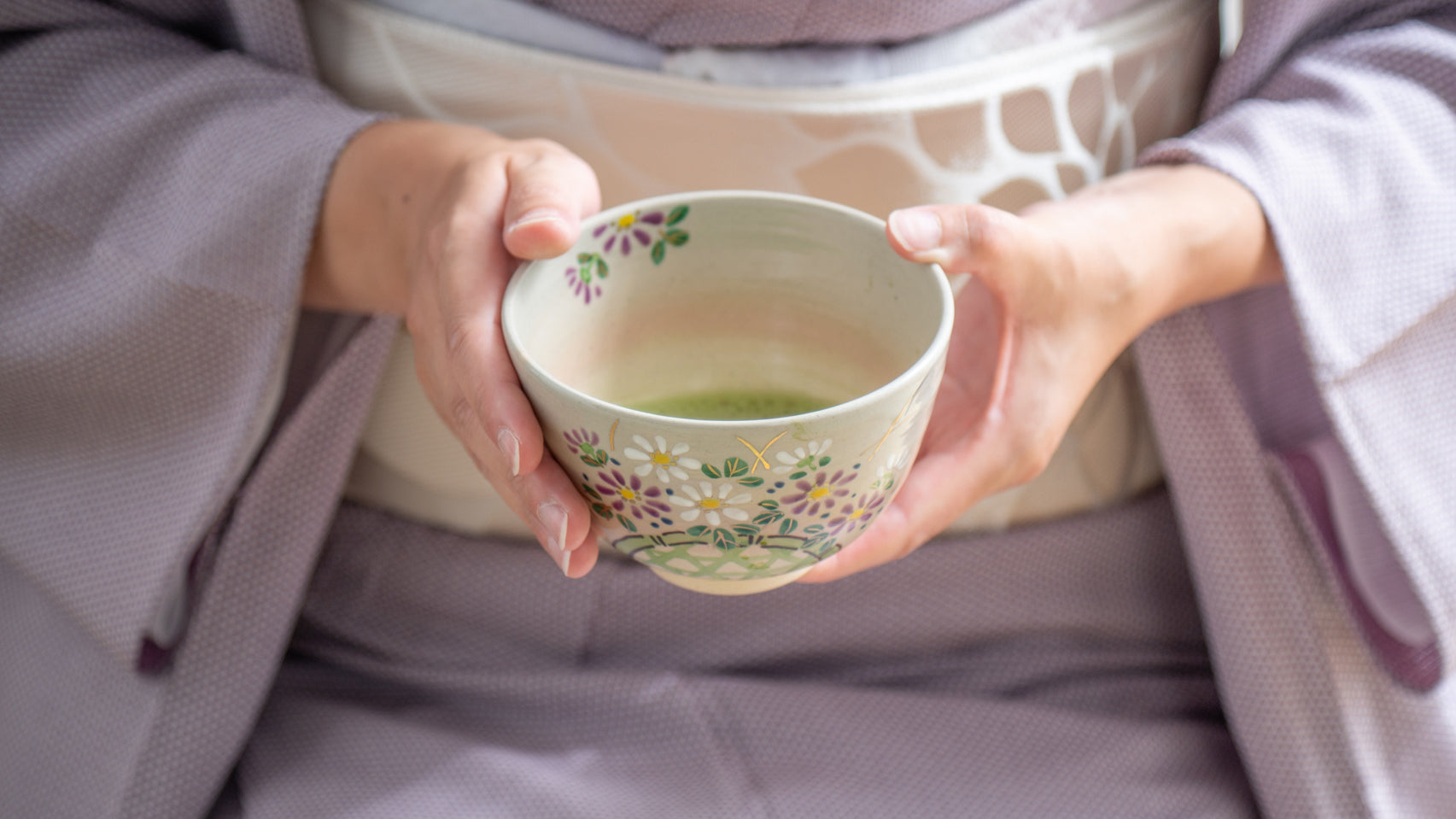
Kunsthandwerk
Kyo- und Kiyomizu-Ware, zusammen als Kyo-yaki und Kiyomizu-yaki bekannt, sind berühmte Keramikstile aus Kyoto. Bekannt für ihr lebendiges Design, ihre fein geformten Formen und die Liebe zum handwerklichen Detail, spiegeln diese Waren Kyotos unverwechselbaren Sinn für Schönheit und künstlerische Raffinesse wider.
Kyo- und Kiyomizu-Ware zeichnen sich durch eine lange gepflegte Vielfalt aus und greifen auf Techniken und Stile der Töpfertraditionen Japans zurück. So entwickelte sich eine ausdrucksstarke und typisch Kyoto-Kunstform. 1977 als traditionelles japanisches Kunsthandwerk anerkannt, werden sie bis heute wegen ihrer kulturellen Tiefe und Alltagstauglichkeit geschätzt.

Anmerkungen
Optionen auswählen





















Estimated Shipping Widget will be displayed here!
Matcha Schüsseln
Nehmen Sie sich einen Moment Zeit zum Entspannen und genießen Sie Matcha zu Hause mit einem authentischen und wunderschön zubereiteten Matcha chawan.
Entdecken Sie unsere Kollektion handgefertigter japanischer Matcha-Schalen, die alle von erfahrenen Kunsthandwerkern hergestellt wurden, und finden Sie die perfekte Schale für Ihr Tee-Erlebnis.
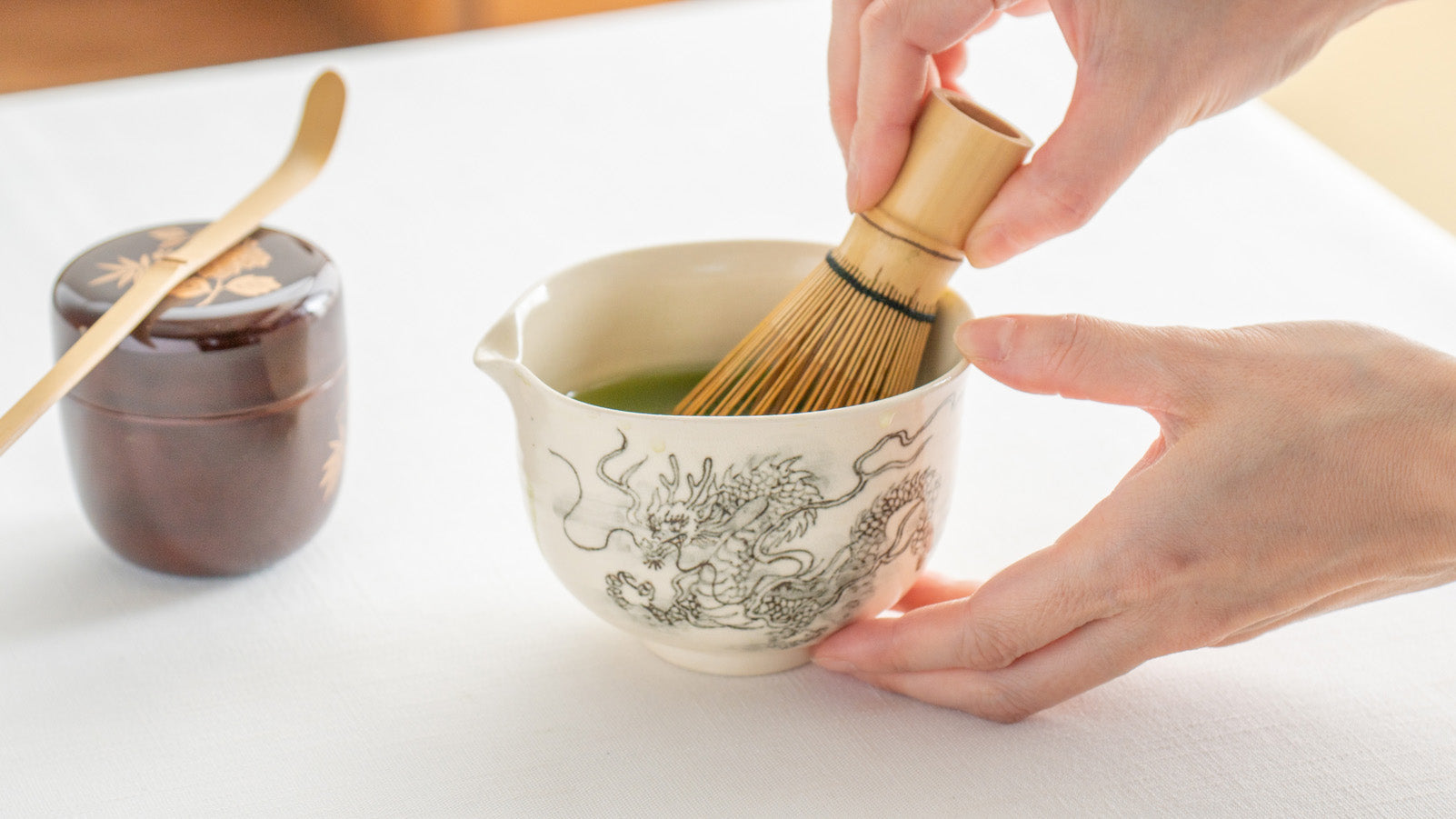
Fisch
Nachfolgend haben wir Produkte mit Fischmotiven zusammengestellt. Von fröhlichen Goldfischen über majestätische Kois bis hin zu glückverheißenden Goldbrassen – Fische nehmen in Japans Kunst und Kultur einen besonderen Platz ein. Feiern Sie die japanische Fischkultur oder verleihen Sie Ihrer Tischdekoration mit diesen einzigartigen und entzückenden Stücken einfach einen Hauch von Charme.


